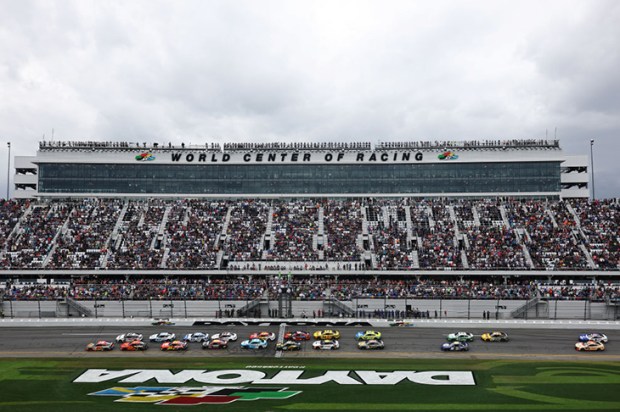Stop conflating width with depth. It is in the detailed results from individual electorates that the likely prospect of Labor not lasting beyond this parliament becomes evident. Despite Prime Minister Albanese’s huge 94-to-43 seat majority in the House of Representatives, the nature of his 3 May election victory, with an unprecedented 91 per cent of Labor MPs only winning their seats on the back of other parties’ preferences, means that Australian voters refused to endorse Albanese’s performance and policies (negating any claims of having a strong mandate) – and leaving his government at high risk of being ousted next time. This is despite the Canberra media bubble’s misguided view that the size of the majority provides a watertight political buffer that will keep Labor in power for the remainder of the decade. It is the lack of voter depth, despite its broad width, that provides a real opportunity for a competent opposition to make the most of what promises to be a difficult three years, domestically and internationally, for the Albanese government. As the Australian newspaper’s Paul Kelly noted, it is doubtful that Albanese can keep Labor in power ‘without a weak Liberal party’. How long are the odds that the Coalition can eventually work out what it stands for and how to fight a strong election campaign?
Never before in Australia’s political history has a majority government been so vulnerable to the preferencing decisions made by leaders of third parties, independents and organised so-called independents like the Teals – with their ‘How to vote’ cards largely followed by their supporters who probably give little consideration to which party their preferences will ultimately benefit.
Voter disenchantment with the major parties, that has led to one-third of Australians choosing neither, has generated plenty of political comment on its overall implications. But the full extent of the direct impact on individual seats, and therefore on the electoral risks to government, have received little attention. There is the stark fact that only eight Labor MPs were elected on the first choice of voters on 3 May, with the remaining 86 requiring preferences from other candidates to win. But only 18 years ago when Kevin ‘07 led Labor to victory, 42 – more than half – won on first preferences alone.
The same affliction also hit the Coalition in May, with every one of the Liberal party’s 28 MPs failing to win on first preferences – a disastrous collapse since 2013 when the Abbott-led Liberals won 38 seats on first preferences with the Nationals contributing eight to make up 46, or more than half of the Abbott government’s 90 seats. Just twelve years later the Liberals, incredibly, have not one first-preference winner – and even worse, 28 of its ‘safe’ seats that had been won 12 years ago without the need for other candidates’ preferences, have also been lost.
While Albanese is promising more of the same in his second term, including a continuation of the public discipline that had been absent from recent Labor governments, the enlarged size of his party room brings with it challenges that Albanese has not had to face before. Apart from the large number of ambitious, and soon to be frustrated, MPs who will not be on the front bench and the normal factional tensions, there is a question mark over Albanese’s capacity to keep control of Labor’s policy thrust, even though he will have the added authority resulting from his successful re-election. Many of Liberal Prime Minister Malcolm Fraser’s problems stemmed from a party room that sometimes overflowed the modest constraints of the Coalition’s ‘broad church’. Labor’s Caucus is also a broad church, albeit with the career-ending threat of ex-communication as the reward for schism. And with so many new faces that may have conflicting views about the order of service, already the evident denting of the traditional dominance of the stability-promoting NSW right (over ministerial appointments) has raised questions about the future cohesion of the flock.
But the main focus is on Albanese himself. Hubris in imagining he has a mandate to make significant changes to Australian society provides another risk to his government’s long-term survival. Paul Kelly, Australia’s most astute political commentator, recently described Albanese, as a ‘former left radical activist rabble-rouser who doesn’t talk socialism any more or protectionism or Hawke-Keating reformism’ but instead ‘has fashioned a different pragmatic strategy for Labor… of “no one held back, no-one left behind”… in a fusion of compassion and aspiration’.
That benevolent view ignores the reality that Albanese is clearly setting out to pursue his mini-socialist agenda through the less-apparent method of pragmatic politics; its graduality is designed not to frighten the horses. He is buying, with taxpayers’ money, widespread voting support for Labor up the income scale through this principle of universality – the basic philosophic opposite from the Liberal principles (abandoned in the Dutton campaign’s matching of Labor’s handouts) of lower taxes, individual responsibility with a safety net for those in real need. Albanese’s agenda was evidenced by his billions of dollars in non-means-tested bribes in the May election..
Albanese’s thrust, through this mini-socialist principle of universal, rather than needs-based, governmental handouts, is to get as many Australians as possible benefiting from government support of one kind or another, with Kelly describing Albanese as ‘a hip-pocket gradualist… using the budget to pacify myriad interest groups and voting constituencies by delivering social benefits on the principle of universality in order to reach a wider middle-class’ to build up Labor’s sagging primary vote. And it represents a direct response to John Howard’s successful pursuit of the aspirational voters of the outer suburbs who were seduced by Albo’s promises and deserted the Dutton campaign
So we face three years of creeping socialism not only from Albanese’s overt support for governmental intervention and pro-union industrial relations laws, but more significantly, by stealth through universal benefits (Yes, Albanese includes a miner on $200,000 a year ‘because they deserve to be represented and they work hard and have a family that they need to look after’).
His universality credo sees his energy bill relief go to everyone, no matter their income, is behind his moves to strengthen the universality of Medicare, justifies childcare support for people earning up to $530,000 because ‘universality as a principle is important in garnering broad support for needed reform’. But, as Kelly acknowledges, ‘it is really about underpinning voter support for Labor further up the income scale and locking in the backing of tertiary-educated women’.
Unless his second term delivers a restoration of Australians’ rapidly declining living standards and real wages, non-inflationary economic growth, higher productivity and a vibrant market economy, Albanese faces a large election hurdle in 2028. These political high risks will be weaponised by his majority’s lack of voter depth. This overwhelming reliance on the preferences of competitors stands to expose the false comfort of Albanese’s record majority.
Got something to add? Join the discussion and comment below.
You might disagree with half of it, but you’ll enjoy reading all of it. Try your first month for free, then just $2 a week for the remainder of your first year.













